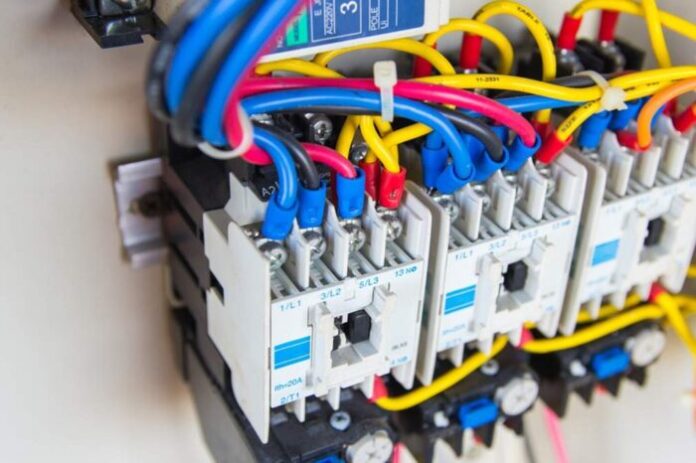Homeowners and buyers have choices about how they protect and insure their homes. First, property owners purchase homeowner’s insurance the protect the property against common perils. Next, they can purchase a home warranty to protect specific installations in the property. When buying a brand-new home, they will need a warranty to cover faulty installations they discover after the first 30 days.
The combination of the coverage opportunities gives property owners comprehensive coverage for the unexpected. They can also avoid excessive costs when an installation fails to work at inopportune times.
You Have to Buy One

All properties will not come with a home warranty, and the property owner will need to find the best home warranty for their needs. After they purchase a new home, the buyer reviews the available home warranties and compares the terms, the annual fees, and what installations are covered. Each of these details shows the property owner how much protection they have and what services they get through the home warranty. Property owners can learn more about home warranties by visiting 2-10.com right now.
They Aren’t the Same as Homeowner’s Insurance
A homeowner’s insurance policy provides protection for the entire property, and the owner gets funds when the property is damaged or destroyed completely. It doesn’t apply to specific installations, but installations such as the roofing, the walls, and ceilings are covered under the insurance policy.
The difference is that the property damage must happen because of a specific event for the insurance policy to cover the damage. With the home warranty, it covers repairs and replacements for vital installations such as the electrical system or the plumbing. The insurance policy gives the owner funds to cover repairs, but the home warranty gives them major discounts.
You Cannot Cancel Your Homeowner’s Coverage

Homeowners must have a homeowner’s insurance policy if they have an existing mortgage, and if they cancel their homeowner’s insurance, they are in breach of their mortgage contract. Additionally, if the owner cancels their insurance policy, even if they have paid off their mortgage, they will sustain a serious financial loss if their home is destroyed.
Even if the property owner has a home warranty, it will not provide the same coverage as a homeowner’s insurance policy. Yes, they could get a replacement HVAC system if it is destroyed in a fire, but with the warranty, the homeowner gets a discount on the costs. It will not cover all of these costs.
Your Appliances Are Covered Under the Warranty
All major appliances are covered under a home warranty, and the property owner gets vital services for these installations. If their appliances such as the washer, dryer, stove, or refrigerator stops working, the homeowner contacts the home warranty company and report it. The warranty company sends a repair service provider to the property, and they complete repair services.
The repairs are guaranteed, and the service provider has been evaluated by the warranty company. They will not send an inferior repair service provider, and the property owner must pay fees according to the terms of their warranty.
The repair service provider will also determine if the appliance is beyond repair. When recommending a replacement, the service provider must present the replacement products to the home warranty company. They present the products and the price to the property owners, and the home warranty company explains how the new product will cost the homeowner.
Coverage Can Apply to All HVAC Services

HVAC services could present homeowners with hundreds of dollars in expenses each year, and the property owner may not have a budget that offers enough money for these costs. First, the heating and cooling systems must be maintained according to the manufacturer’s instructions. This includes seasonal cleaning, inspections, and repairs as needed.
When it comes to these systems, the property owner must maintain the systems or they could lose coverage through the home warranty. It is important to review the terms of the warranty for the heating and cooling systems.
Electrical Systems are Covered

Electrical systems can become damaged and fail to operate properly, and the risk of a fire is increased if wires are broken or loose. At the first sign of electrical problems, the property owner needs an inspection, and this lowers the risk of a fire or electric shock. The home warranty company provides electrical repair services faster than a local electrician. Every repair will meet the local building codes.
Exterior Installations Are Often Added to the Warranty
When reviewing home warranties, property owners can customize their coverage to include exterior installations that generate high costs. For example, the property owner needs to customize the home warranty to include these installations and generate savings, and they can include installations such as outdoor kitchens and appliances connected in these spaces, such as a stove or refrigerator.
They can maximize the coverage by adding these new installations to the home warranty. If any of these installations become damaged, the property owner will face higher-than-average costs when repairing them. A complete assessment of additional products covered by the warranty helps the property owner get the most out of their home warranty.
Homeowners Can Transfer It to a New Owner or Their New Property

Home warranties can be transferred to the buyer or to a new property when the owner decides to move. If they transfer the home warranty to a new owner, the new owner will take over the contract and pay the annual premiums.
If they transfer the warranty to the seller, the property owner will need to start a new home warranty for their latest real estate purchase. The new warranty is catered to fit the demands of the new property. For example, if they purchase a larger home, the property owner will pay more for the home warranty. They can review an estimate for the home warranty and how much they can save when starting it.
They Decrease the Cost of Repairs and Replacements
The cost of repairing or replacing vital installations in the home presents homeowners with a high price tag. When reviewing a home warranty, the property owner discovers that they get discounts on the replacement products and the installation fees. In comparison to taking on the costs themselves, the property owner saves a bundle and has access to higher quality products and certified professionals that perform the services.
A home warranty company evaluates all service providers in the area and sets up contracts with those that offer the best services. The property owner won’t have to search for a repair service on their own. They just call the home warranty company and start a claim.
The Warranty Doesn’t Cover All the Costs

A major misconception that homeowners have is that the home warranty will cover all the costs of repairs or replacements. This is just not true and isn’t what they can expect when purchasing a home warranty. The purpose of the warranty is to make household repairs and product replacements more affordable for the property owner.
The terms of the home warranty define how much the property owner saves on repairs and replacement services according to what installations they include in the warranty. For example, if they are replacing a heating element in a dryer, they won’t pay the full price of the part and the labor. They pay a certain percentage of the overall expenses and pay the service provider a fee.
Most Warrant Companies Offer Installment Plans
Property owners that cannot afford to pay the full upfront cost of the home warranty have the option to make installment payments. The home warranty company provides them with an estimate for the annual premiums, and the property owner can pay smaller payments over a predetermined amount of time. This is a major saving for the property owner and helps them get the protection they need for their home.
New Homeowners Do Not Have to Use the Same Warranty Company as the seller

When buying a new property, the seller may include a home warranty with the property, but the buyer is not required to use the same warranty. If they are buying a home, the buyer can base their interest in the home according to the findings presented by the home inspection.
If there are issues, the buyer negotiates with the seller to get the repairs completed.
Typically, the warranties are presented as an alternative for the seller to correct issues with covered installations.
Homeowners and buyers have the opportunity to protect their homes more thoroughly by purchasing a home warranty. The home warranty is not the same thing as homeowner’s insurance. Many homeowners confuse the two and often cancel their homeowner’s insurance due to common misconceptions. The warranty covers specific installations in the home and provides discounts on repairs and replacement services.
Homeowners include all installations such as electrical systems, plumbing, and appliances.
However, the property owner can customize the warranty and get the most out of the coverage. A review of the home warranties helps the homeowners make a sound decision about protecting their home.









